Poaching Upsurge Threatens South America’s Iconic Vicuña
Brought back from the brink of extinction, the llama-like animals have attracted the attention of poachers eager to turn a profit from their prized wool
/https://tf-cmsv2-smithsonianmag-media.s3.amazonaws.com/filer/5f/91/5f91aea6-e220-478f-b39e-1dd298b52734/dsc_8698_640x425.jpg)
Corsino Huallata Ibarra was helping his parents round up their herd of llamas at their home in the Bolivian countryside when the sound of gunshots made him jump. Scanning the horizon, distant movement caught his eye. He could just make out the forms of several vicuñas—alpaca-like animals whose wool is some of the finest and most expensive in the world—seemingly fleeing from something.
Ibarra, a veterinary professor at the Public University of El Alto in La Paz, knew well what the gunfire likely meant. Across their range in the high Andean plateau, vicuñas—a protected species—are increasingly targeted by poachers who leave behind a trail of dead animals stripped from the neck down of their valuable hides.
“Every shot that occurs in the highlands are vicuñas being hunted,” Ibarra says. Poachers also do not hesitate to turn their guns on any human who tries to interfere. Last January, two Chilean police officers were killed at the Peruvian border when they stopped vicuña traffickers. And that same month, Ephraim Mamani Arevillca, a state conservationist and friend of Ibarra’s, was found murdered. “In Bolivia, he was the only governmental employee fighting on the frontlines against vicuña-related crooks,” Ibarra says. Poachers are presumably to blame for Arevillca’s death, although no arrests have been made.
Despite the danger, after hearing the shots, Ibarra jumped on his motorcycle and sped toward the area where he had last seen the panicky vicuñas. As he approached, he spotted two men crouched over a fallen animal, caught red-handed in the processes of removing its blood-soaked skin. Seeing him, the hunters stopped what they were doing and took off on their own bike. Ibarra gave chase and gained on them. Then the poachers stopped and jumped to the ground. One took aim at Ibarra with his shotgun.
“I had to throw my motorcycle to the ground and run in zigzags to avoid being hunted myself by those evil-doers,” he says. “I am sure that if I had continued to face them, I would have been shot.”
Vicuña poaching has escalated recently, a well-known fact among conservationists working in the species’ home range of Bolivia, Chile, Argentina and Peru. More than 5,000 of the animals have been found dead over the past five years or so, although as Benito Gonzalez, a zoologist at the University of Chile and chair of the International Union for Conservation of Nature’s South American Camelid Special Group, points out, vicuñas inhabit areas that are exceedingly difficult to patrol, meaning official poaching figures are “just the tip of the iceberg.” This dark truth is lesser known to the rest of the world, however, which largely views vicuñas as a beaming conservation success story.
Centuries ago, the Inca harvested prized vicuña fiber by harmlessly shearing the animals, which they considered sacred. The exquisitely soft but ultra-warm garments created from vicuña wool were reserved for rulers, under threat of death for violators. When the Spanish arrived, they were equally entranced by the fibers, but in keeping with their violent conquest of the Incan Empire in the 16th century, they simply killed vicuñas to access their wool.
That method persisted until the 1960s, when just 10,000 vicuñas remained.
Realizing that the species was in danger of imminent extinction, conservationists and vicuña range-state governments began scrambling to save it; first by protecting the animals and outlawing trade in their wool; then in the 1990s and 2000s, by launching programs that harkened back to the old way of doing things: introducing community-led efforts to harmlessly and sustainably shear vicuñas and manage populations.
At first, the plan seemed to be working. Locals worked together to harvest the wool, which they used to make handicrafts or sold to textile companies in Italy, Scotland and Japan. “The program started quite well, but for the past 15 years we’ve discovered a series of fundamental problems,” says Cristian Bonacic, currently a visiting professor at the University of Wisconsin, Madison, and permanently based at the Pontifical Catholic University of Chile.
For starters, as soon as limited legal trade in vicuña wool was established, it opened the door for laundering of illegal counterparts. As poaching ramped up, some communities gave up on sustainable shearing after receiving threats from illegal hunters. Others, including quinoa farmers in Bolivia, view vicuñas as a pest and menace to their crops, and turn a blind eye to the killings.
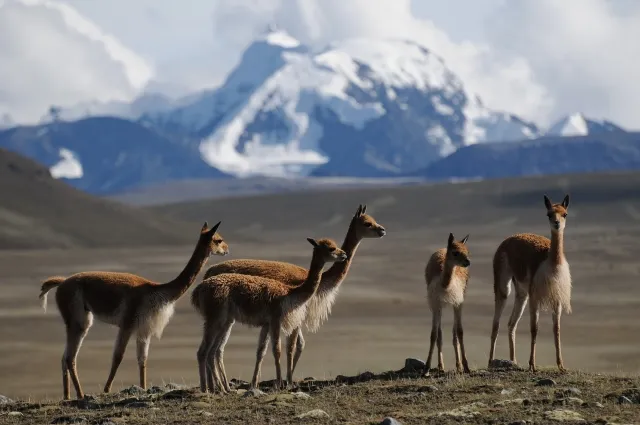
To compound these problems, those who do stick to sustainable methods are not fully rewarded for their efforts. Communities working directly with vicuñas, most of which are extremely poor, currently receive little profit for all their effort—“the smallest piece of the pie,” says Daniel Elias Maydana, a technical advisor for the National Association of Vicuña Fiber Producers who works in Bolivia and northern Argentina. “The money obtained from managing vicuñas is important, but it’s certainly not sufficient to lift families out of poverty.”
In 2014, for example, Peru exported 10 tons of vicuña fiber to Italy, for which all Peruvian communities combined received a grand total of $250,000. “That is ridiculously small,” Bonacic says. A single coat, using just two kilos (4.4 pounds) of wool, can cost $50,000, he says, meaning that the fashion industry’s revenue from just five garments can equal the entire earnings that the whole of Peru’s vicuña-producing communities sees in a year. Figures cited for community profits often vary, however; Maydana says that 10 tons of fiber earns locals $3.5 million.
This producer-seller inequity for legally sold vicuña wool extends to other South American nations as well. As Bonacic says: “I wouldn’t consider vicuñas a good example of fair trade.”
Individuals know very well how much vicuña fiber is worth, however, which increases the odds of some turning to illegal trade. “With limited support and incentive to develop legal vicuña use, there is sometimes more financial gain from illegal use,” says Gabriela Lichtenstein, an independent researcher at the National Research Council in Argentina.
Vicuñas are now listed as a species of “Least Concern” according to the International Union for Conservation of Nature, but most experts agree that there is cause for concern. Vicuña populations now hover at 400,000 to 500,000 animals, but their numbers have remained stagnant or—in the case of Chile—declined over the past two decades.
“It’s true that populations are large, but they’re far less than the 7 to 8 million that we should have,” Bonacic says. “I seriously think that if poaching continues to increase, some populations may go extinct.”
Experts are still struggling to uncover basic facts about the recent wave of killings, including who is to blame, where illegal vicuña fiber and products wind up and how worried conservationists should be.
While some rural residents likely turn to illegal hunting as a way to supplement their income, in other cases poaching gangs with possible ties to cocaine trafficking are believed to be responsible. “In Argentina, there are drug groups coming in from Bolivia who pay their way with illegal fiber from vicuñas,” says Obdulio Menghi, president of the Biodiversity Foundation-Argentina.
“It's difficult to know how deep and dangerous these poaching gangs have become,” Bonacic adds. “But drug trafficking is growing in the area.”
Illegal products that result from the killings are easily procured. In a 2012 market survey carried out in El Alto, Bolivia, Ibarra tallied 166 vendors illegally selling 800 pounds (365 kilos) of processed and unprocessed vicuña fiber; over 750 pounds (345 kilos) of vicuña blankets; and numerous scarves, ties and head scarves. 2.2 pounds (1 kilo) of illegally harvested vicuña fiber sells for $250—half the price of legally shorn wool—but as Menghi points out, “I can assure you that $250 is a lot of money for these people.”
Evidence is emerging that vicuña trafficking extends far beyond the animals’ home states. Earlier this month, Menghi discovered illegal Peruvian vicuña ponchos (he can tell by their dark brown coloration) for sale at an open-air market in Geneva, and he has found similar products in the United Kingdom and France.
An article published in the Los Angeles Times in June also named China as a destination for illegal vicuña wool. So far, that connection has not been officially established, although the market for vicuña products—known in Chinese as “camel horse”—is growing.
In 2013, luxury designer Loro Piana opened a large store in Beijing and hosted a weeklong vicuña exposition that played up the animal’s rarity but also emphasized the company’s conservation efforts. Earlier this year, Piacenza, another Italian brand, began collaborating with Zhejiang Shenzhou Wool Textile Company to introduce vicuña to their customers.
“There’s no evidence yet for illegal trade of vicuña in China, but I suspect it,” Menghi says. “Like rhino horn trade, I believe there are people behind this who have connections to markets outside of the vicuña countries.”
For numerous reasons, curbing the killings remains a challenge. Poachers can easily evade detection in the vast Andean terrain, and law enforcement officers who pursue them put themselves at risk. Illegal hunters may carry banned guns that are more powerful than those issued to the police, says Carlos Muñoz, a captain at the Environment Crime and Cultural Heritage Department of Chile’s Investigation Police.
Smuggling, for now, is also easy for poachers. Borders are permeable, and customs agents who do take the time to carry out inspections often have difficulty distinguishing between products originating from llama, alpaca and vicuña. Finally, if criminals are caught, laws to prosecute them are lax. In Bolivia, crimes against vicuñas carry a maximum of three years, but offenders are almost always pardoned, while Chile’s national law does not differentiate between killing a vicuña or a mouse, or one animal or a hundred.
“Far from discouraging wildlife trade, [current legislation] favors it,” Muñoz says. “It’s a crime that requires little or no investment, with high profit margins and low penalties.”
Conservationists are pushing for solutions. In September, Chile hosted a meeting of the Vicuña Convention, which all four vicuña countries plus Ecuador, which hosts a small introduced population, are party to. Discussions included methods for tackling the illegal trade; plans to establish a central database for tracking vicuña poaching across nations; and improved techniques for increasing traceability of international movements of vicuña fiber and products.
“Countries are now accepting that this problem is real and that it’s a big threat for the species,” Gonzalez says. “This is a very big step.”
Slowly, the issue is gaining some international support, too. In June, the U.S. Department of the Interior’s International Technical Assistance Program brought a delegation of Chileans to Ashland, Oregon, to receive training at the U.S. Fish and Wildlife Service’s Forensics Lab in methods that could be used to investigate vicuña poaching cases. Another workshop is planned for December in Chile and is open to individuals from other vicuña countries as well.
Earlier this month, Menghi also continued discussions with Interpol in Europe about vicuña trafficking, with the goal of uncovering the international criminal networks that he believes are the masterminds behind at least some of the illegal trade.
“I began working with vicuñas in the 1980s, and this is a project that I’m very proud of,” he says. “It’s very sad for me to see these developments in the sunset years of my life, in the region in which I was born. But I will do everything I can in order to re-establish the healthy management program that we had in the past.”
/https://tf-cmsv2-smithsonianmag-media.s3.amazonaws.com/accounts/headshot/Rachel-Nuwer-240.jpg)
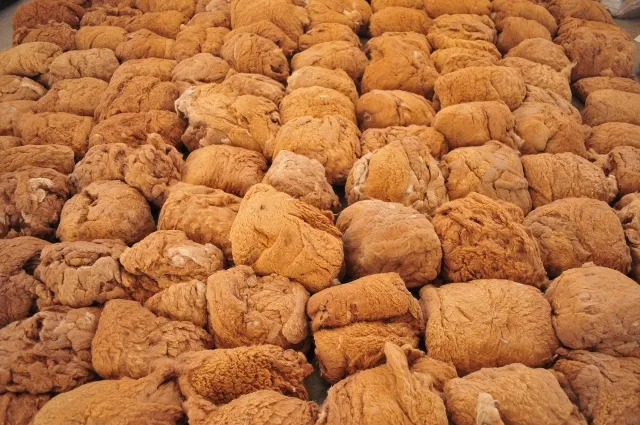
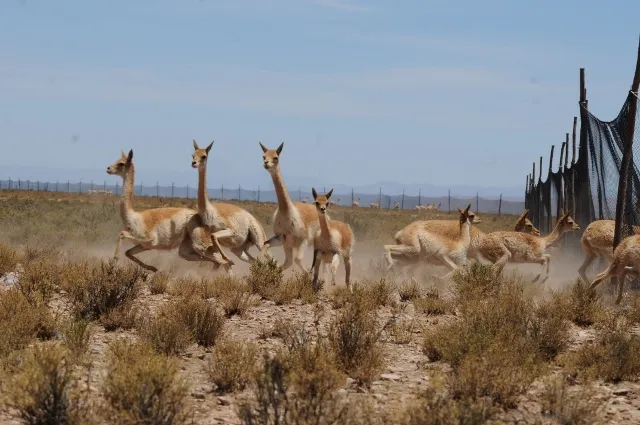
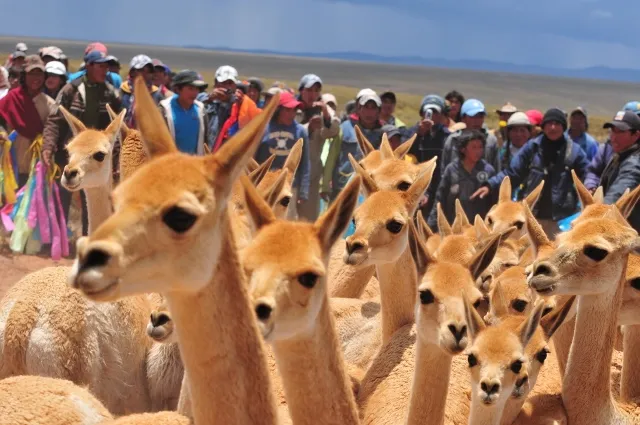
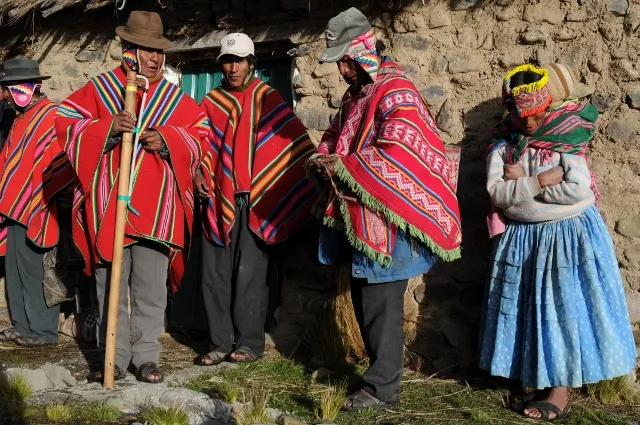

/https://tf-cmsv2-smithsonianmag-media.s3.amazonaws.com/accounts/headshot/Rachel-Nuwer-240.jpg)